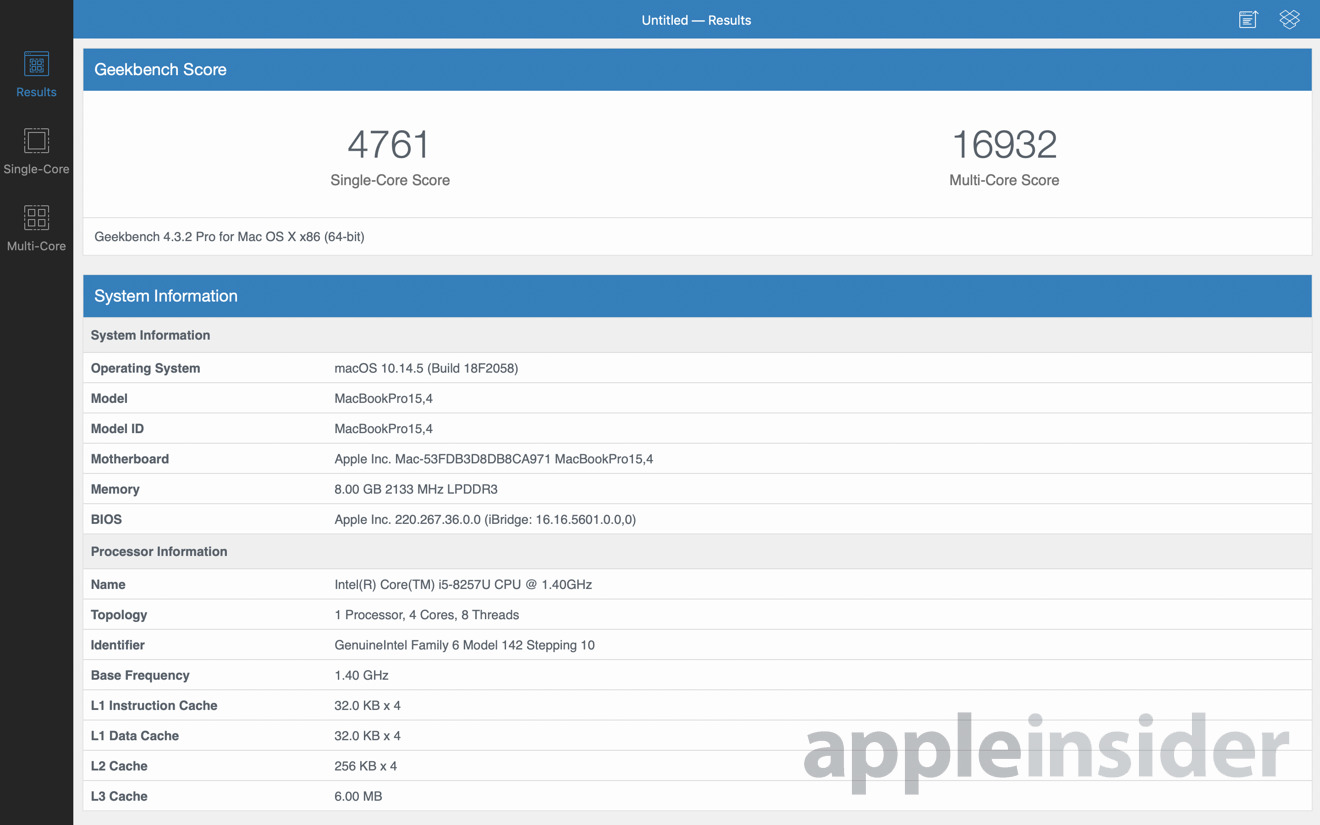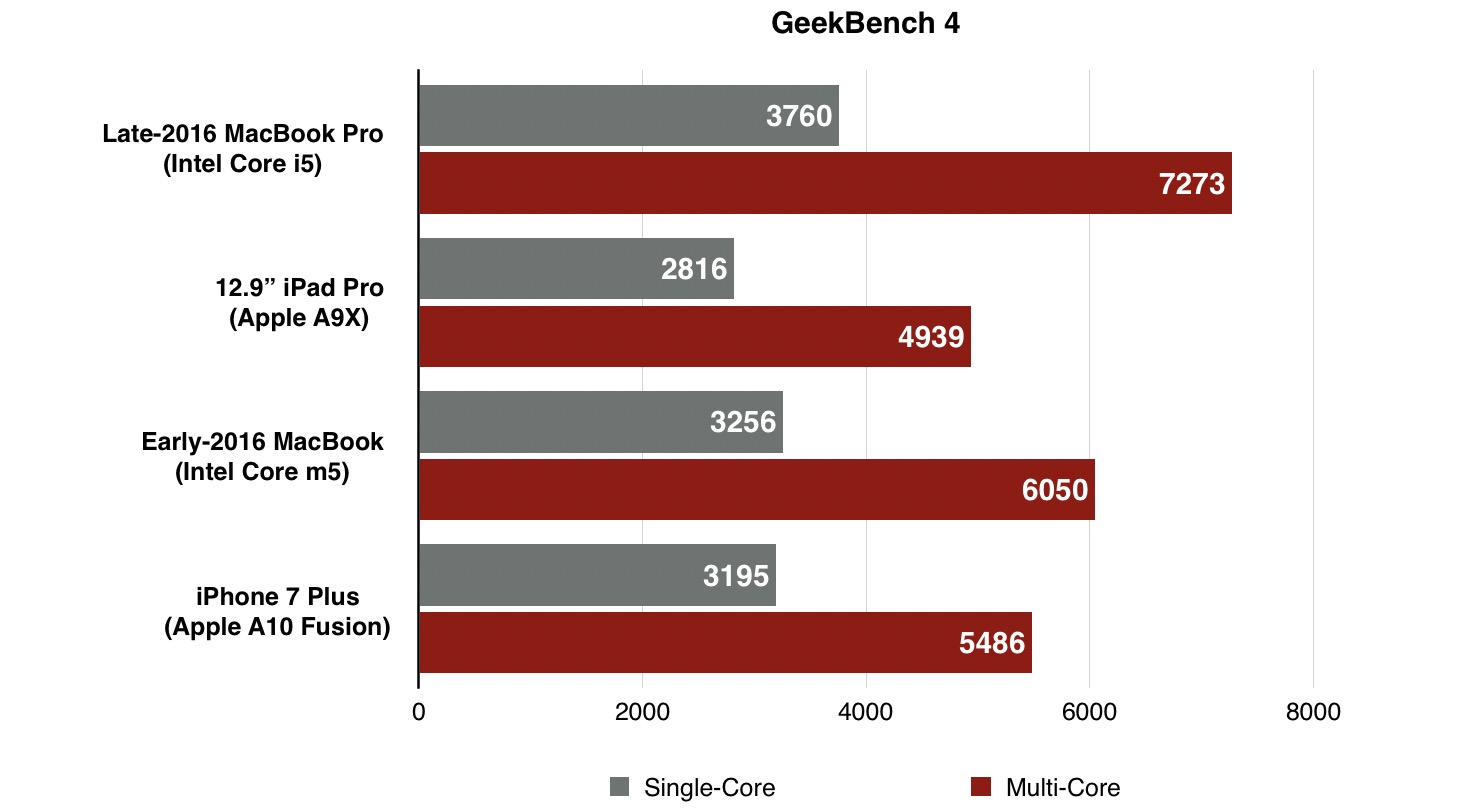
/article-new/2017/06/2017-macbook-pro-geekbench-chart.jpg)
The Mac mini isn't the same unit we reviewed a year ago, though. We're also including a couple of systems of old: the 2020 Mac mini and MSI's Prestige 14 EVO, a Tiger Lake notebook with a footprint much closer to that of the 14" MacBook Pro.
MACBOOK VS MACBOOK PRO GEEKBENCH PC
It'll be going up against one of the best creator-focused notebooks the PC ecosystem has to offer with a much stronger GPU. So there we have it: the MacBook Pro should have excellent CPU performance with midrange graphics (theoretically) to go with its killer screen. That 14" MacBook config would be an even $3,000 as well, while a 16" version would run $3,200. Due to its price, the Creator Z16 is a better comparison to either a customized 14" or the 16" model, both of which have an M1 Max with a 24-core GPU and 10-core CPU, but the Pro is what we have on hand.

It's available for an even $3,000 at Amazon and has a 16:10 1600p display that runs at 120 Hz, a Core i7-11980HK, and a GeForce RTX 3060. This system would be a perfect comparison for a beefed-up 16" MacBook Pro as the MSI notebook has very similar dimensions and only weighs a couple ounces more than the Mac. The MSI Creator Z16 takes on the MacBook ProĪs it stands, we don't have any PCs with a GPU that "slow" (relatively speaking) laying around, but we do have a very nice MSI Creator Z16 handy.

This is more like GeForce GTX 1650 Ti (mobile) levels of performance than it is the latest from NVIDIA. All the exciting benchmark leaks that compared the new MacBooks to GeForce RTX 3060s and 3080s were with the huge 32-core GPU, by the way, so we're not exactly expecting a close fight. Two extra performance cores on the CPU and a slightly bigger GPU likely bring a good amount of extra performance for a $300 upcharge on the 14" model, if you want to keep your Mac smaller. This chip doesn't appear in the 16" lineup at all, which is part of why the company can charge $500 more for the larger, more powerful machine. We're testing a binned part cut down to fit Apple's budget on the 14.2" MacBook Pro. We're pretty sure, with the MacBook Pro we are testing, there is performance left on the table. Theorycrafting M1 Pro MacBook Pro Performance We'll be sure to note those things along the way. That means that the scores we see for the Mac aren't as high as they theoretically could be on those tests, but that doesn't matter the numbers are the numbers, and they reflect the reality whether they're optimum or not. That's certainly not a blocker since macOS 12 Monterey brings support for the Rosetta 2 compatibility layer, which we found last year to run x86 apps in a fast and transparent manner on the 2020 Mac mini. Second, many of the tests we can run on macOS are built for x86 processors. We did this with the 2020 Mac mini, and it only makes sense to do the same thing here. However, with one of the primary reasons to buy a Mac being the software, we'll be looking at a few Mac-specific tests a little later, as well. We're going to make do with the best we have, which is largely cross-platform applications. That includes the heavier 3DMark tests and many Windows-only games. First off, a good number of our performance benchmarks are Windows-only utilities, so they won't appear here.

4 + x4 0.70 = 7399 then x = 1088 therefore x8 + x 40.70 = 11,750 or around 58%.Before we go any further, we should note a couple of things. Assuming that - without taking any thermal throttling down on adding 4 more performance cores (likely there will be some) would give the Geekbench score of 11,750. The calculation I used takes what I believe is the performance profile for an efficiency core of 70% of the performance core. "I expect the CPU portion of M1X to max out at 11,750 on Geekbench (about 58% more performance) (probably a bit less maybe 50%). GPU is a bit of a outstanding question (geekbench does a compute benchmark not necessarily a video based benchmark). It is beginning to look like it is around 12,750 (about 3,000 more than your top of the line gaming laptop). (it was made when it was expected to be an 8/4 mix). My bad, I actually under estimated the improvement.


 0 kommentar(er)
0 kommentar(er)
